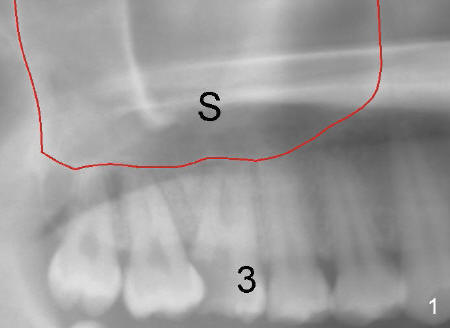
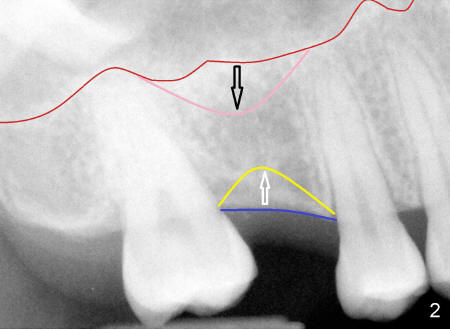
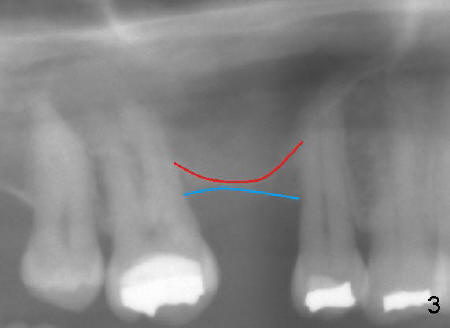
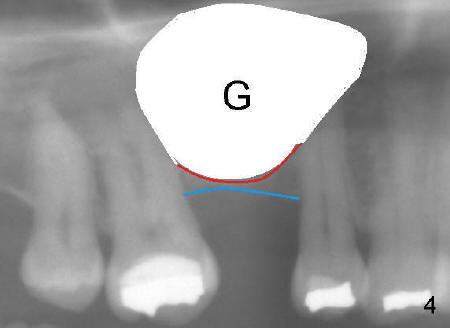
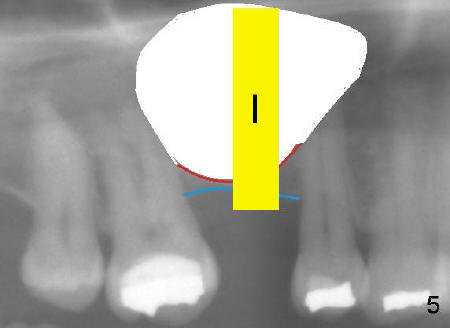
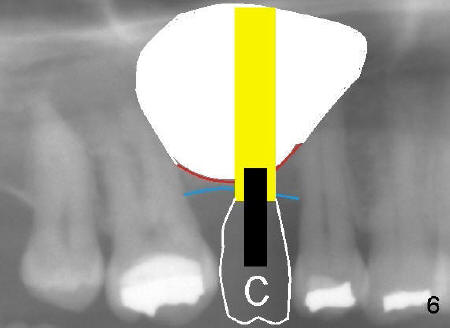
 |
 |
 |
 |
 |
 |
Dental Education Lecture: Sinus Graft
There is a big empty space (maxillary sinus, sinus in short: S in Fig.1) above upper back teeth, including the tooth #3 (badly broken). After tooth extraction, the sinus tends to grow downward (from red line to pink line in Fig.2) while the bottom of jaw bone (blue line) shrinks upward (white arrow). Gradually we have less and less bone in height to hold implant. As time goes by, the bone may almost completely be gone (between two lines in Fig.3). To overcome difficulty to place an implant in insufficient bone below the sinus, bone graft (G in Fig.4) is placed in the sinus. Six months are needed to let the graft heal and become part of our bone. Then an implant (I in Fig.5) is placed inside the bone graft. Finally an abutment (black in Fig.6) is inserted into the implant and a crown is placed over the abutment and implant. The patient can chew normally. When bone height is not reduced much (as shown in Fig.2), a more conservative procedure is preferred. It is called sinus lift.
Xin Wei, DDS, PhD, MS 1st edition 03/19/2011, last revision 03/20/2011